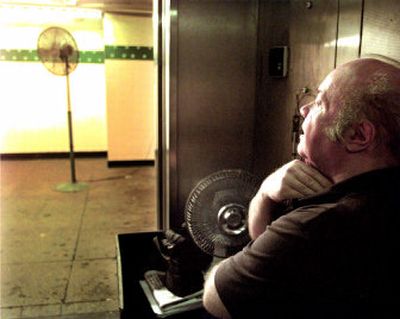Get A-C ready now, beat summer heat

Q: You have recommended insulating the heating ducts in the house to increase efficiency. Does the same hold true for air-conditioning ducts? — Jake in Oakland
A: Because central air and central heat generally use the same ventilation ducts to carry cooled or heated air through the house, the answer is yes. The main purpose of insulation is to prevent heat from being lost as the air is moved to the living areas of the house, and it will do the same for cold air. So insulation will provide year-round efficiency and improved energy costs.
•Before installing insulation, check the ductwork for damage or loose joints, make repairs, and cover joint seams with mastic — a gooey adhesive that dries to a solid sealant — or foil tape, which has a metal backing and acrylic adhesive. Both products should be UL 181 approved. Standard duct tape is not recommended for sealing duct joints or leaks.
•Insulate ducts in unheated areas of the house, such as the basement, attic or crawlspace. Wrap the ducts in 2-inch-thick, R-8 or R-11 insulation, taping the seams with foil tape.
•Spring is a good time to check and improve your air-conditioning system, because any problems can be taken care of before hot weather really sets in. You’ll also have a better chance of scheduling professional repairs — because on the first hot day of summer, if the system shuts down, you’ll end up waiting a long time for a repairman.
•Uncover and clear debris from outdoor central-air units, trimming back any shrubs that have grown to within 6 inches of the unit. Make sure the condenser fins are clear, and that the unit does not sit in direct sunlight (if so, plant a bush or small tree nearby to shade it). Purchase filters and schedule the annual inspection if recommended by the manufacturer. Filters should be changed every month while the air conditioner is in use.
•Window and room units should be taken out of storage and inspected for damage, dents, rust and dirt. It’s still too early to install these units in some parts of the country, but in general, when you replace your storm windows with screens, it’s safe to put the window units up, too. Filters should be cleaned or replaced every two weeks during the season, and the condenser grills should be vacuumed and then wiped with a damp rag.